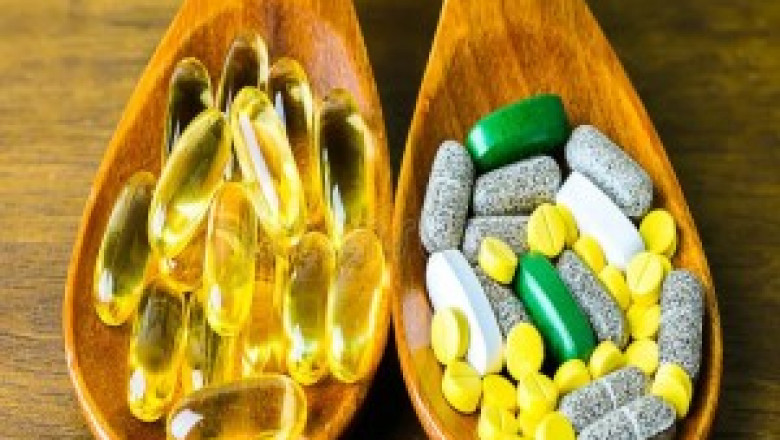views
Hydrogels are hydrophilic, three-dimensional polymer networks that are capable of absorbing large amounts of water or biological fluids. They have emerged as promising materials for developing drug delivery systems due to their biocompatibility and ability to release drugs in a controlled manner.
Composition and Structure of Hydrogels
Hydrogel-Based Drug Delivery System are composed of hydrophilic polymers that allow them to uptake significant amounts of water or physiological fluids. The most common polymers used in hydrogels include natural polymers such as hyaluronic acid, gelatin, chitosan; and synthetic polymers like poly(vinyl alcohol), poly(ethylene glycol), polyacrylamide. These polymers are crosslinked either physically or chemically to form a three-dimensional network structure with water-filled pores. The crosslinking density determines the amount of fluid uptake and drug release kinetics of the hydrogel.
Drug Loading and Release Mechanisms
There are various ways in which drugs can be loaded into hydrogels including absorption, encapsulation, conjugation, and immobilization. Absorption involves drug molecules being taken up within the hydrogel network through diffusion or hydrophobic/ionic interactions. Encapsulation refers to entrapping drug molecules or nanoparticles within the hydrogel matrix during polymerization. Conjugation attaches drug molecules covalently to the polymer backbone. Immobilization binds drugs to functional groups on polymer chains.
The rate and amount of drug release from hydrogels depend on several factors like polymer type, crosslinking density, pore size, drug-polymer interactions. Drugs are released through diffusion and polymer degradation mechanisms. As the hydrogel swells and degrades, the drug molecules diffuse out in a sustained manner. This makes hydrogels promising for long-term controlled release applications.
Applications in Drug Delivery
Oral Delivery: Hydrogels can protect drugs from gastrointestinal degradation and control their absorption from the gut. Several hydrogel-based formulations are available for oral delivery of proteins, peptides, and anti-inflammatory drugs.
Ocular Delivery: Hydrogels are extensively researched for ocular drug delivery due to their biocompatibility and ability to adhere to the eye surface. They have been explored to deliver drugs for glaucoma, retinoblastoma, uveitis, and diabetic retinopathy.
Topical Delivery: Hydrogels are widely used as vehicles for dermal and mucosal applications like wound healing, atopic dermatitis, and vaginal infections. Their ability to maintain a moist environment and release drugs locally makes them attractive for these areas.
Injectable Systems: Hydrogels that are liquid at room temperature but gel at body temperature have potential for use as in-situ forming implants. They can be administered through minimally invasive procedures and release drugs over weeks to months.
Smart Hydrogels for Drug Delivery
Researchers are now developing 'smart' hydrogels that undergo environmental changes in response to external biological stimuli like temperature, pH, ionic strength, enzymes, and light. These 'intelligent' hydrogels hold promise for developing advanced systems with on-demand, targeted, and personalized drug delivery capabilities.
Some examples of stimuli-responsive hydrogels include temperature-sensitive systems that dissolve at body temperature for rapid drug release. pH-sensitive hydrogels release higher amounts of drugs at slightly acidic tumor pH. Enzyme-degradable hydrogels degrade only in the presence of specific enzymes overexpressed in diseased tissues. Light-activated systems allow non-invasive remote control of drug release through irradiation with near infra-red light.
Future Perspectives and Challenges
Hydrogel technology is still evolving with active research focused on developing customized formulations for different applications. Advancements in materials and fabrication methods will likely create extracellular matrix-mimicking biomaterials capable of intricately regulating drug pharmacokinetics. Coupling hydrogels with other nanotechnologies could provide multifunctional capabilities like imaging, sensing and cellular interactions along with drug delivery. Combination therapy approaches using hydrogels also hold promise. Some challenges include achieving economic large-scale production, long-term in vivo stability, and regulatory approval of novel materials. Overall, hydrogels hold immense potential to revolutionize drug delivery and therapeutics in the future.
Resources – Applications of Hydrogel-Based Drug Delivery Systems in Cancer Treatment
Get This Report in Japanese Language:
Get This Report in Korean Language:
About Author:
Priya Pandey is a dynamic and passionate editor with over three years of expertise in content editing and proofreading. Holding a bachelor's degree in biotechnology, Priya has a knack for making the content engaging. Her diverse portfolio includes editing documents across different industries, including food and beverages, information and technology, healthcare, chemical and materials, etc. Priya's meticulous attention to detail and commitment to excellence make her an invaluable asset in the world of content creation and refinement. (LinkedIn- https://www.linkedin.com/in/priya-pandey-8417a8173/)






















Comments
0 comment